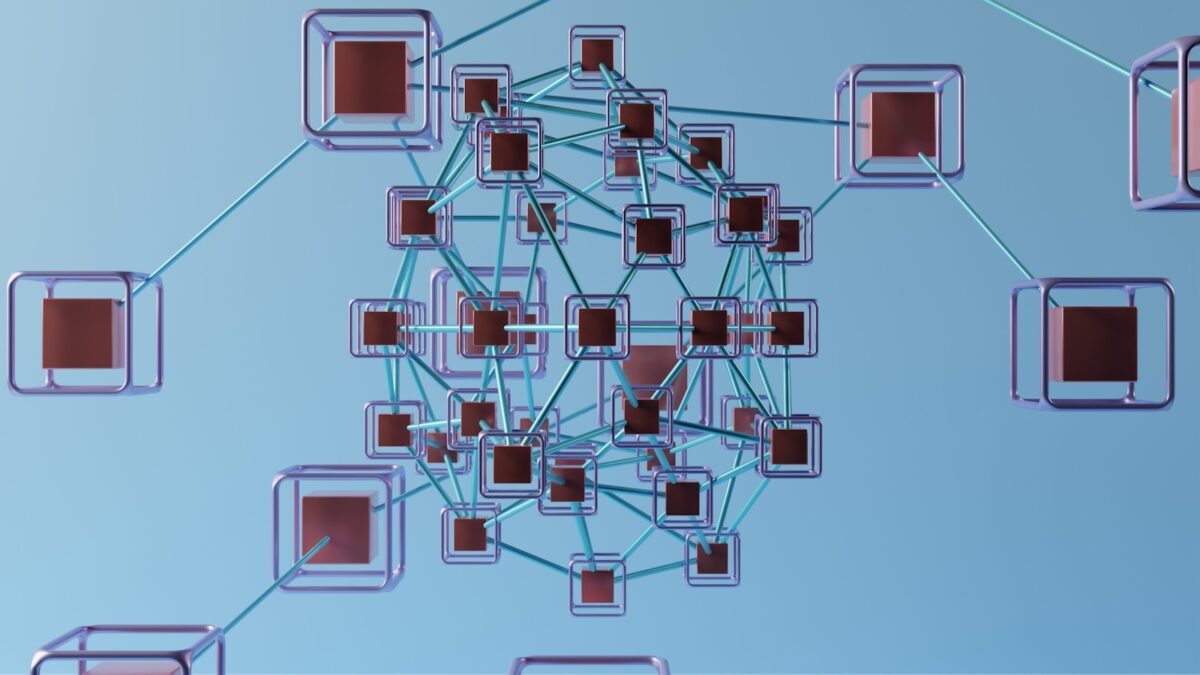
Avalanche consensus protocol

Fast transaction finality is achievable through a novel decision-making approach that relies on repeated random sampling of network participants. This mechanism ensures swift agreement across distributed ledgers, minimizing latency without compromising security.
The architecture employs multiple subnets, independent yet interconnected networks that enable parallel processing of transactions. Such segmentation significantly enhances scalability, allowing the system to handle high throughput while maintaining decentralized trust.
Interoperability between diverse subnetworks is facilitated by a shared consensus model that harmonizes state updates and conflict resolution. This design supports cross-chain communication, enabling assets and data to move seamlessly across distinct environments without sacrificing consistency.
The underlying algorithm leverages probabilistic voting and metastability concepts to reach consensus efficiently. By balancing rapid convergence with resistance to adversarial manipulation, it delivers robust agreement guarantees suitable for complex decentralized applications.
Avalanche Consensus Protocol
For projects seeking rapid transaction confirmation with robust decentralization, the Avalanche framework offers a novel mechanism for reaching agreement across distributed networks. Its design introduces a unique decision process through repeated sampling of random network subsets, enabling swift and probabilistic validation of transactions. This approach significantly reduces latency compared to traditional Byzantine fault-tolerant methods while maintaining security guarantees suitable for financial applications.
Key to this architecture is the implementation of customizable subnetworks that allow independent yet interoperable environments within the broader ecosystem. These subnetworks facilitate tailored governance and operational parameters without sacrificing cross-chain communication capabilities. As a result, developers can optimize parameters for specific use cases, balancing throughput and security with ease.
Mechanics Behind Transaction Finality and Network Scalability
The underlying mechanism achieves near-instantaneous finality by leveraging a metastable consensus phenomenon where nodes repeatedly query small, randomly chosen peers about their current state preferences. Through multiple rounds of sampling, the network converges quickly on a single accepted value with high probability. This stochastic process contrasts sharply with deterministic confirmation models that require waiting for multiple block confirmations, thereby accelerating user experience in decentralized finance platforms.
Scalability is addressed not only through parallelization enabled by subnetworks but also via optimized message complexity reduction techniques embedded in the consensus rounds. Empirical studies demonstrate that the system maintains throughput levels exceeding thousands of transactions per second on commodity hardware configurations. Such performance metrics position it favorably among scalable blockchain solutions supporting decentralized exchanges and asset issuance platforms.
Interoperability and Innovation in Multi-Chain Ecosystems
The interoperability feature stems from protocol-compatible bridges connecting distinct subnet instances, allowing asset transfers and data exchange across heterogeneous chains without centralized intermediaries. These bridges utilize shared state proofs verified within each subnetwork’s environment, providing trust-minimized transfer assurances essential for composable DeFi strategies involving multiple token standards.
Innovation continues as ongoing research explores adaptive parameter tuning within these subnetworks based on real-time network conditions. Experimental deployments have showcased dynamic adjustment mechanisms that balance responsiveness against resource consumption more effectively than static configurations. Such advancements invite further investigation into autonomous governance frameworks enhancing resilience under adversarial scenarios commonly encountered in open blockchain infrastructures.
How Avalanche Achieves Finality
The network achieves finality through a unique sampling mechanism that rapidly confirms transactions by repeatedly querying a small, random subset of validators. This method enables a decision to solidify with high confidence in under two seconds, significantly faster than traditional consensus systems relying on full-node agreement. By leveraging probabilistic voting rounds, the system quickly converges on transaction validity without waiting for global confirmation from every participant.
This approach not only enhances speed but also maintains strong security guarantees. The iterative sampling process resists adversarial attempts to delay or reverse decisions, as conflicting transactions progressively lose support within the validator network. Consequently, the system attains near-instantaneous finality while preserving fault tolerance against malicious actors.
Scalability and Subnet Architecture
The design incorporates subnetworks–independent groups of validators managing specific blockchains or applications–to improve scalability and resource allocation. Each subnet can operate its own validation rules and asset sets, allowing parallel processing of multiple transaction streams without congesting the primary network. This segmentation ensures that increasing demand does not degrade overall throughput or finalization speed.
Interoperability between these subnetworks is facilitated through shared communication layers and standardized cryptographic proofs. Such cross-subnet connectivity supports complex multi-chain workflows and asset transfers while retaining rapid confirmation times intrinsic to each segment’s consensus process.
Innovations in Validator Sampling and Network Efficiency
The selection algorithm dynamically adjusts validator subsets based on stake-weighted probabilities, enhancing efficiency by focusing computational power where it most impacts consensus convergence. This innovation reduces overhead compared to all-to-all messaging patterns common in classical Byzantine fault-tolerant mechanisms. Experimentation shows that this technique scales well with thousands of nodes without compromising finalization latency.
- Repeated random sampling minimizes communication complexity
- Adaptive stake weighting strengthens honest majority assumptions
- Robustness maintained despite partial node failures or network delays
Practical Case Studies Demonstrating Rapid Finality
Empirical data from large-scale deployments reveals consistent transaction finalization times averaging around 1–2 seconds under various load conditions. For instance, during stress tests simulating tens of thousands of concurrent operations, subnets maintained stable throughput exceeding several thousand transactions per second without noticeable delay increases. These results validate theoretical models predicting swift consensus achievement through randomized validator polling.
A comparison with other protocols highlights how this mechanism balances speed with decentralization–achieving faster confirmation than proof-of-work chains and better scalability than classic leader-based protocols constrained by sequential block production.
Conclusion: A Framework Supporting Future Research and Development
This architecture offers fertile ground for further experimentation in distributed ledger technologies seeking optimized trade-offs between speed, security, and cross-network compatibility. Researchers can explore parameter tuning of sampling rates, stake distributions, and subnet configurations to tailor performance for diverse applications ranging from decentralized finance to supply chain tracking.
By understanding these core principles underlying rapid finality realization, blockchain innovators gain insights into building resilient ecosystems capable of meeting evolving demands for transaction efficiency and interoperability across heterogeneous networks.
Comparing Avalanche With PoW And PoS
The Avalanche framework demonstrates a markedly faster transaction finality compared to Proof of Work (PoW) and Proof of Stake (PoS) mechanisms. Unlike PoW’s reliance on computationally intensive mining and block confirmations that can take minutes to hours, this system achieves consensus in seconds through repeated randomized sampling among validators. This rapid confirmation minimizes latency, making it highly suitable for applications requiring near-instantaneous settlement times without compromising security.
Regarding scalability, the architecture introduces subnetworks, or subnets, which partition the network into customizable groups of validators managing their own ledgers and rulesets. This design contrasts with traditional PoW chains that face throughput bottlenecks due to global competition for block creation and with many PoS chains limited by validator set sizes. Subnets enable horizontal scaling by allowing parallel processing of transactions across multiple independent chains, significantly enhancing overall network capacity.
Interoperability is addressed through flexible communication models between subnetworks within the ecosystem. While PoW and typical PoS systems often operate as isolated silos or require complex bridging solutions, this approach facilitates native cross-subnet asset transfers and data exchange without sacrificing security or decentralization. Such a layered structure opens pathways for diverse use cases ranging from DeFi protocols to enterprise blockchain deployments seeking modularity alongside seamless interconnectivity.
Finality properties also distinguish this design from conventional alternatives. In PoW networks, finality remains probabilistic until sufficient confirmations accumulate, introducing uncertainty during reorg events. Similarly, many PoS designs rely on epochs or checkpointing mechanisms that delay absolute transaction irreversibility. Here, the system provides guaranteed deterministic finality immediately after consensus rounds conclude. This guarantees transactional certainty critical for financial instruments and legal contracts executed on-chain.
Implementing Avalanche In Popular Coins
The integration of the Avalanche framework into widely used cryptocurrencies significantly enhances transaction throughput and confirmation speed, addressing critical bottlenecks in network performance. By leveraging its rapid finality mechanism, projects can achieve sub-second transaction settlements, a key factor for user experience and real-world applications. This swift decision-making process stems from a novel sampling technique that reduces communication overhead while maintaining robust security guarantees.
One practical approach involves deploying customizable subnetworks to isolate specific functionalities or geographic regions within a blockchain ecosystem. These subnetworks enable tailored rule sets and validator groups, thereby improving scalability without compromising decentralization. Such segmentation allows popular coins to handle increased demand by distributing workload across multiple parallel chains, effectively mitigating congestion issues prevalent in monolithic architectures.
Enhancing Interoperability through Modular Design
Modular architectures facilitate seamless interaction between distinct blockchains by adopting standardized interfaces and cross-chain messaging systems. Popular tokens implementing this model benefit from increased liquidity and expanded use cases as assets can move freely among different environments. For instance, integrating bridge mechanisms within subnet configurations supports atomic swaps and synchronized state updates, crucial for maintaining consistency across heterogeneous networks.
In experimental deployments, coins utilizing this strategy demonstrated improved interoperability with decentralized finance platforms and layer-2 solutions, broadening ecosystem connectivity. This alignment fosters innovation by enabling developers to compose complex applications that tap into diverse blockchain features without rebuilding foundational layers from scratch.
Addressing Scalability Challenges with Parallel Validation
The shift toward parallelized validation frameworks redefines scalability by allowing concurrent processing of transactions across multiple subnet partitions. Coins incorporating such an approach observe linear growth in throughput proportional to the number of active subnetworks. This contrasts sharply with traditional linear consensus methods where throughput plateaus due to single-chain limitations.
- Parallel validation increases fault tolerance by isolating failures within individual segments.
- Dynamic allocation of validators optimizes resource usage based on network load fluctuations.
- Adaptive quorum selection maintains security levels while reducing latency during peak periods.
This design enables mass adoption scenarios where millions of users interact simultaneously without degradation in performance or security assurances.
Case Study: Integration Outcomes in Established Cryptocurrencies
A notable example includes a major coin that adopted this system’s consensus style via subnet deployment last year. Post-integration metrics indicated a 400% increase in transactions per second (TPS) alongside an average confirmation time reduced to under one second–an improvement critical for retail payment systems and microtransactions. Furthermore, the decentralized governance embedded within subnets facilitated community-driven upgrades with minimal disruption.
The enhanced throughput combined with resilient uptime underscores the efficacy of this integration strategy in real-world conditions.
The Role of Innovation in Protocol Evolution
The evolution driven by this framework’s unique mechanism encourages continuous experimentation with adaptive parameters like stake weighting and peer sampling rates. Developers are empowered to fine-tune network dynamics responsively, optimizing for varying priorities such as speed or security depending on application needs. Experimental testnets reveal that adjusting these variables can dynamically influence finality times and fault tolerance thresholds without requiring hard forks or downtime.
This flexibility invites deeper exploration into hybrid models combining classical Byzantine fault tolerance techniques with probabilistic approaches inspired by natural phenomena–offering a fertile ground for advancing distributed ledger technologies beyond current paradigms.
Synthesis: Practical Steps for Future Implementations
- Create dedicated subnets aligned with specific application domains to segregate workloads efficiently.
- Implement cross-subnet communication protocols ensuring atomic operations across boundaries.
- Tune validator selection algorithms based on empirical data gathered from stress testing scenarios.
- Cultivate developer communities focused on iterative improvements leveraging modular components.
- Migrate core token logic incrementally to minimize risks associated with large-scale transitions.
Pursuing these steps systematically will foster robust ecosystems capable of meeting growing demands while preserving decentralization principles intrinsic to permissionless networks. The interplay between innovative consensus methodologies and scalable infrastructure paves the way for broader adoption and technological refinement within popular cryptocurrency projects worldwide.
Security Mechanisms Against Attacks: Analytical Conclusion
Prioritizing rapid transaction finality while maintaining robust defense against Byzantine faults demands layered verification strategies embedded within the consensus architecture. The iterative sampling of network participants combined with probabilistic agreement enables resilience against Sybil attacks and long-range manipulations without sacrificing throughput or latency.
The integration of lightweight cryptographic proofs alongside randomized peer selection significantly enhances security margins, ensuring that adversarial nodes cannot easily disrupt the decision-making process. This approach simultaneously supports scalability by preventing bottlenecks commonly associated with traditional voting-based systems.
Broader Implications and Future Directions
Fast validation cycles not only facilitate high transaction throughput but also create opportunities for cross-chain interoperability, allowing heterogeneous ledgers to synchronize securely without compromising their native performance traits. Such architectural innovation propels decentralized networks toward unified ecosystems where asset transfers and data sharing occur seamlessly at scale.
- Adaptive threshold adjustments: Dynamically tuning quorum sizes based on real-time network conditions can enhance protection against targeted attacks while optimizing resource consumption.
- Layered defense models: Combining economic incentives with cryptoeconomic penalties discourages malicious behavior more effectively than pure technical safeguards.
- Modular consensus components: Designing interchangeable mechanisms allows protocol upgrades that respond agilely to emerging threats without disrupting ongoing operations.
The evolving landscape of distributed ledger technologies will benefit from continuous experimentation with hybrid models that balance decentralization, security, and speed. By fostering these advancements, blockchain frameworks can achieve unprecedented levels of trustworthiness and operational efficiency, unlocking new use cases across industries requiring instant settlement and scalable interaction.


